
Next-gen biopsies take the sting out of diagnosis
What if diagnosing anxiety was as easy as X-raying a broken bone and required little more than a trip to the doctor’s office, a blood draw and time? That is the goal of Alexander Niculescu, a professor of psychiatry at the Indiana University.
What if kidney cancer could be diagnosed and monitored with a simple urine sample, avoiding painful needle biopsies and unnecessary surgery? That’s what researchers Ronald Boris and W. Andy Tao are working toward.
Traditional biopsies use needles to extract cells or tissues for testing. Painful and invasive, they are best known for their use in cancer diagnostics. And though useful for initial diagnosis, needle biopsies present significant health risks so physicians cannot use them to look at tumor heterogeneity, metastasis or behavior over time.
To take the sting out of biopsies and address their limitations, scientists have developed a new diagnostic and monitoring tool: the liquid biopsy. Instead of a needle painfully invading patient tissues, a liquid biopsy uses a small amount of blood, saliva or urine to test for disease-related materials such as DNA or proteins, sometimes called biomarkers, in the affected organ. With these biomarkers, physicians can easily determine the presence and severity of a disease.

The US. Food and Drug Administration has approved several liquid biopsy tests that detect circulating tumor cells or DNA to help doctors identify the stage of a cancer and the most effective treatment.
Nick Davidson, division chief of gastroenterology at Washington University in St. Louis, Missouri, and co-editor-in-chief of the Journal of Lipid Research is on the front lines of liquid biopsy use in the clinic. Davidson uses liquid biopsy diagnostics to track disease recurrence in cancer patients who have undergone treatment.
“The emergence of (liquid biopsy) tests has been driven by increasing sophistication and decreased costs of DNA sequencing and other genetic profiling technologies,” Davidson said. “As those costs have come down, their sensitivity has improved.”
Not all tumors shed cells or DNA in the blood at detectable levels, and the scope of liquid biopsy technology in the clinic is limited. Therefore, researchers are working to expand the applications of this technology and exploring what other bodily fluids, such as urine, and molecules other than DNA can reveal about disease.
Researchers, including Davidson, say liquid biopsies will likely be a big part of the future of precision medicine. However, as with any burgeoning technology, the road has not always been smooth. And the bumps have included one of the biggest scandals in 21st-century medicine.
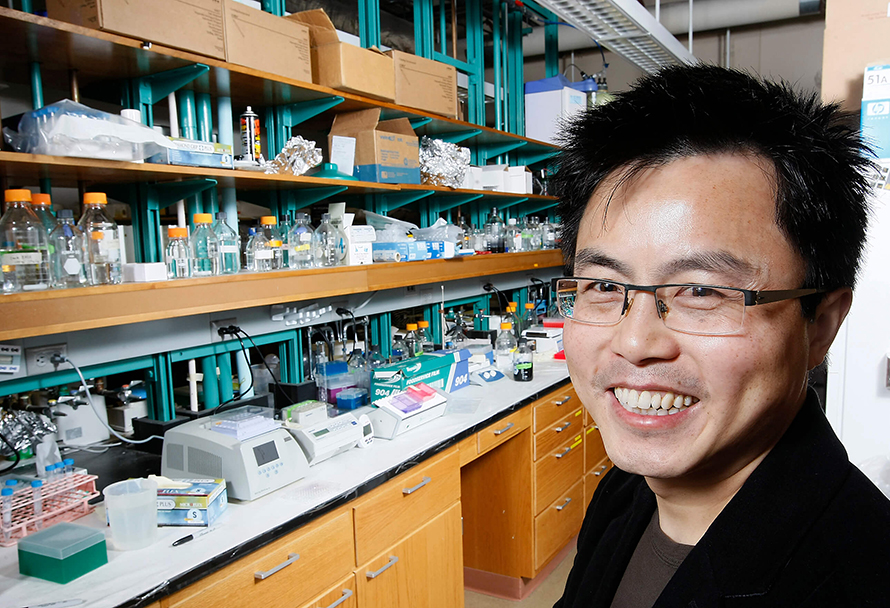
New-wave diagnosis and monitoring
If it’s true that knowledge is power, therein lies a strength of liquid biopsies. The technology gives patients and physicians the knowledge and power to decide what constitutes the best individualized treatment plan.
Liquid biopsy tests exist for prostate and lung cancer, but not for kidney cancer. This disease often goes undiagnosed for months after it develops because kidney tumors are slow to cause symptoms.
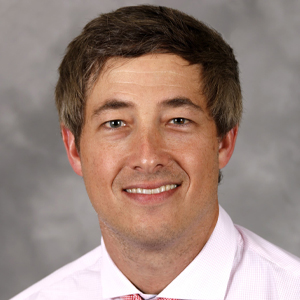
Boris, an associate professor of clinical urology at the Indiana University School of Medicine, and Tao, a professor of chemical biology and analytical chemistry at Purdue, teamed up to find a better way to diagnose and monitor kidney cancer patients.
“From the clinical standpoint, I think one of the things that we are lacking in renal cell cancer is a diagnostic technique to characterize masses before intervention,” Boris said. “Historically, for renal cell tumors, we had this old adage, which is you see the tumor and you cut it out. There was not a whole lot of thought put into it from the surgical standpoint. … First and foremost, we now want to know if somebody has a threatening tumor or not.”
After doctors identify a potentially cancerous mass in a kidney, most patients choose surgery to remove the mass right away. However, this surgery is risky and may harm normal kidney functions. Noting the lack of noninvasive diagnostic tools, Tao and Boris wanted to find an easier way to diagnose and monitor kidney cancer.
“We asked the question: Is a ‘liquid biopsy’ for kidney cancer possible and potentially more reliable than a tissue biopsy?” Tao said.
The team focused on the biomarkers called phosphoproteins. Marco Hadisurya, a Purdue graduate student who works with Tao and Boris, described phosphoproteins as the workhorses of the tumor. Using phosphoproteins produced by a kidney tumor and excreted in urine, the researchers can interpret how aggressive the tumor may be. The team identified a unique set of these phosphoproteins that serve as a tumor’s fingerprint and may help clinicians differentiate between low- and high-grade kidney cancer using only a urine sample. Their work was published in Molecular & Cellular Proteomics.
The phosphoproteins in urine are enveloped in extracellular vesicles, which Hadisurya described as “tiny packages.” The team used a new method known as data-independent acquisition phosphoproteomics to tease apart the biomarkers found in these extracellular vesicles.
With this method, the researchers’ data is highly reproducible, which addresses a challenge to the scientific research community of late, Tao said.
Unlike tissue biopsies, liquid biopsies can be taken repeatedly from one person, giving physicians a way to frequently and accurately monitor patients for recurrence.
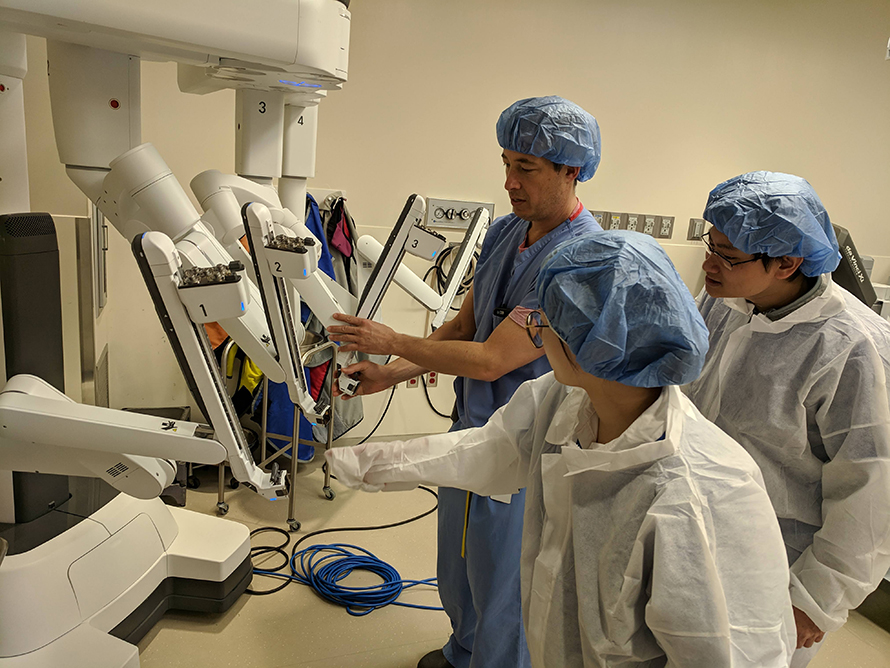
‘You cannot biopsy the brain’
Although liquid biopsies were first designed and implemented to detect cancer, psychiatry professor Niculescu at Indiana University is pushing the bounds of what can be surveyed using liquid biopsy technology.
In addition to being difficult to diagnose, mental health disorders such as depression and anxiety present a challenge to physicians because “you cannot biopsy the brain,” Niculescu said.
When Niculescu began his clinical psychiatry residency 25 years ago, he dreamed of combining the skills in molecular cancer genetics he learned as a graduate student with his passion for treating patients with psychiatric disorders.
“I wanted to bring some of the insights, methodologies and precision from cancer over to mental health,” he said.
Niculescu’s goal was a lofty one. Mental health and psychiatric disorders have long been misunderstood and misdiagnosed. He committed himself to reducing the “stigma and shame” so often associated with these disorders.
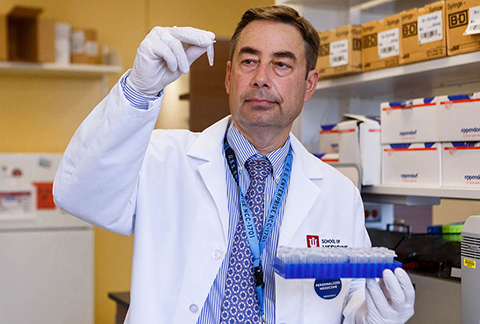
Over the past two decades, Niculescu has worked with patients, clinicians and scientists to collect and examine over 1,200 blood transcriptomic data sets from over 500 healthy and sick patients. Researchers examined the transcriptomic data to find patterns and biomarkers that correlate with disease. After completing correlation studies, they refined biomarker panels for a variety of disease profiles and published biomarker profiles for depression, anxiety, post-traumatic stress disorder, Alzheimer’s disease and chronic pain in the journal Molecular Psychiatry.
After collecting this data, the team used convergent functional genomics to rank the association of certain biomarkers with each mental health disorder.
“(The method) reminds one of a Google page rank algorithm where the more relevant matches rise higher up in your search,” Niculescu said, explaining that the more lines of evidence from different studies converge for a candidate biomarker, “the more it gets prioritized in the rank.”
Because Niculescu’s team followed the same individuals over time, it could weed out the genetic variation, or what he called “noise,” from person to person.
As a part of their standard pipeline, once the researchers prioritize and validate the candidate biomarkers associated with each condition, they put the biomarkers through a final, rigorous test in patient cohorts.
“We look at additional independent clinical cohorts to see if our biomarkers accurately classify who's ill and who's not,” Niculescu said. “We want to see if they can predict outcomes such as who will have future emergency room visits or hospitalizations for those disorders.
“It's a very comprehensive stepwise process to make sure that we discover the signal, and then prioritize, validate and test it in independent cohorts to show clinical validity of the signal. And at the end, we end up with that panel of biomarkers that went through all these hurdles, and that's what we put forward as useful clinically.”
To diagnose a patient, along with behavioral questions and tests, Niculescu’s team can use this data to see if an undiagnosed patient’s transcriptomic profile overlaps with any of the biomarker panels they’ve established for conditions from previous studies.
Time and other hurdles
Liquid biopsy technology can detect many types of disease indicators, or biomarkers. These include tumor cells, DNA, RNA, genomic modifications, proteins and posttranslational modifications.
The human genome is made up of 22,000 genes. However, the proteins expressed in a cell can be modified with over 400 posttranslational modifications.
Therefore, the proteome — the entire complement of proteins with posttranslational modifications that is or can be expressed by a cell, tissue or organism — can consist of up to 1 million protein forms. Discovering an accurate, reproducible set of biomarkers by sifting through this data for multiple patients is like finding a needle in a very large haystack.
Mining for biomarkers to create a liquid biopsy test requires power and time, according to Jennifer Van Eyk, a professor of cardiology at Cedars–Sinai Medical Center. In some cases, labs can take 10 years or more to move a biomarker through the pipeline and “many good biomarkers get lost along the way,” she said.
“People often say, ‘It's been so long that people have been doing discovery and proteomics … and not that many (tests) have hit the clinic,’” Van Eyk said. “Usually, people don't realize how hard it is to move a biomarker from discovery to clinical use. This is a very long process that requires time, money and equipment.”
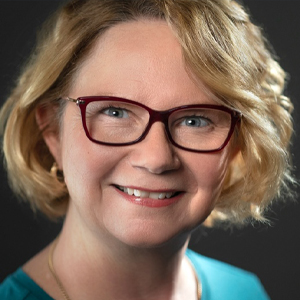
The process of taking a biomarker from discovery to clinical implementation as a liquid biopsy test requires the expertise of geneticists, pathologists, physicians and other experts, Van Eyk said.
That’s why Boris and Tao teamed up and combined their respective expertise in clinical urology and analytical chemistry to tackle the kidney cancer liquid biopsy.
“We were able to have conversations and learn from each other about science and medicine in the clinic and operating room,” Tao said.
To streamline discovery and foster more such collaborations, Van Eyk and others founded the Precision Biomarker Laboratories at Cedars–Sinai. The center is designed to take biomarkers from the discovery phase through commercial development and finally to clinical use.
Liquid biopsy tests may seem simple, but they require expertise and equipment that cost hundreds of thousands of dollars. This cost is likely preventing them from being adopted widely, Niculescu said. However, he thinks this technology will eventually lessen the financial burden of diagnosis.
“Wide implementation of liquid biopsies would benefit the health care system,” Niculescu said. “Even though liquid biopsy approaches are relatively expensive, the test is still cheaper than a day of hospitalization or an ER visit. They could also ease the distress of patients and their families by avoiding tragedies like suicide.”
A liquid biopsy requires only a small sample to generate a huge data set; however, reduced access to healthcare in low-income and rural areas may stifle the implementation of this technology up front.
Van Eyk’s lab has adopted an affordable solution.
The lab uses remote sampling devices to collect blood, which can then go through the biomarker discovery phase. These minimally invasive devices come with all the supplies a patient needs to perform a finger prick at home and collect a predetermined amount of blood in a plastic tube with little contamination. This sample is stable at room temperature and can be shipped anywhere around the world.
Van Eyk said these devices and mass spectrometry could help make healthcare and study participation more accessible.
“There are lots of conditions and situations where we use these sampling devices,” she said.
Instead of going to a study site, a patient could perform their own blood draw, so the device reduces travel costs, Van Eyk said. “It also reduces barriers of who can participate in a study and moves us toward more equality of service. Right now, they are not so much being used clinically. But, we're hoping they will be pushing in that direction.”
Liquid biopsies cannot completely replace tissue biopsies and haven’t been extensively used in clinical settings outside of oncology. However, the technology is promising for many fields, Boris said, and may be able to guide individualized approaches to cancer management.
Questions, scandal and promise
A few liquid biopsy diagnostic tests designed for home use are now commonly available, but results can be problematic. And patients may be wary after hearing news accounts of derailed attempts to commercialize liquid biopsy technology.
Davidson said some of his patients at WashU have become unnecessarily worried after using at-home tests such as Cologuard to detect colon cancer. Tests like these, in which patients mail stool samples to the manufacturer, do not differentiate between benign polyps and cancerous lesions. They can also produce false positives, according to Davidson.
“I have gotten calls from people with positive Cologuard tests who are convinced they have cancer, but they don’t have any lesions in their colon,” he said. “They continue to get scans and expensive tests, which reveal nothing, but the patient still has concern.”
Cologuard has a false positive rate of 13%, which can cost patients thousands of dollars in unnecessary diagnostic tests.
Eventually, liquid biopsies may be able to help health care providers screen for and manage many different types of diseases. However, the technology is still new and must be honed and applied correctly to work well, Davidson said.
Like Davidson, Eleftherios Diamandis, senior scientist at the Lunenfeld-Tanenbaum Research Institute of Sinai Health System in Toronto, worries that liquid biopsies may not be sensitive and specific enough to be used for early detection screening and diagnostics. Specifically, liquid biopsies used for screening tend to produce many false positive results, about one in 10, he said.
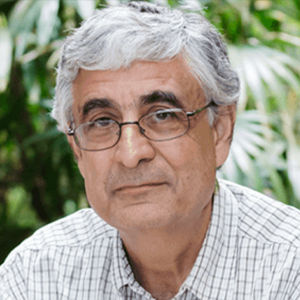
“A false positive in a screen can be very dangerous for the patient,” Diamandis said. “They will worry and undergo unnecessary tests that may be harmful. This technology must be refined in order to make diagnoses.
“However, if we see more promising results in early detection, that could be revolutionary.”
Diamandis’s interest in cutting-edge diagnostics landed him a role in one of the largest scientific scandals of the 21st century, which revolved around the blood diagnostic company Theranos and founder Elizabeth Holmes.
Founded in 2003, Theranos claimed its technology could use a finger pinprick and a tiny amount of blood to rapidly diagnose hundreds of conditions such as high cholesterol and cancer. However, in 2018, the company was dissolved, and in 2022, Holmes was convicted of fraud after news reports revealed the technology the company boasted did not exist.
Diamandis was one of the first scientists to publicly criticize Theranos and Holmes. He learned about the company in about 2014 from his boss at Toronto.
“At the time, I had not heard of (Theranos),” Diamandis said. “So, I went to PubMed to search for their publications, and I found zero results. Then I turned to other information sources like what I heard through the grapevine. … We had no idea how good their data was.”
In 2015, he published an editorial questioning the cost, speed, methodology and results Theranos claimed. Some of his peers criticized him for voicing his skepticism, he said. However, after he, another scientist and a Wall Street Journal reporter all questioned the technology, the company’s claims started to fall apart. Holmes is now serving an 11-year prison term.
David Wong, a professor and director of the Center for Oral/Head & Neck Oncology Research at the UCLA School of Dentistry and an expert on liquid biopsy, said the Theranos scandal emanated from the company’s profound secrecy and lack of transparency.

“The scandal primarily revolved around Theranos' false claims and the lack of scientific evidence to support their technology, rather than being a reflection of the overall validity or potential of liquid biopsy as a diagnostic tool,” Wong said. “Open communication about the limitations, potential risks and benefits of liquid biopsy is essential to manage public expectations and foster trust.”
Though Holmes overpromised on the power of Theranos’ technology and wounded public trust, Taichiro Nonaka, a professor of cellular biology and anatomy at Louisiana State University Health Sciences Center who studies saliva liquid biopsies, said the COVID-19 pandemic may have restored some public confidence in diagnostic technology.
At the beginning of the COVID-19 pandemic, saliva tests were widely used to quickly diagnose the disease. However, because not all individuals could produce enough saliva, these diagnostics were replaced by genetic testing of nasal swabs. Wong and Nonaka’s current research focuses on using salivary liquid biopsies to diagnose breast, lung, esophageal cancers and more.
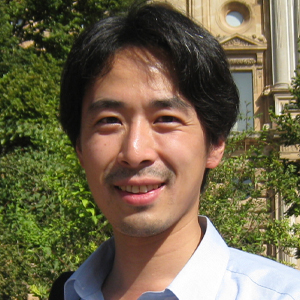
“(Recent scientific) findings have created a favorable public view of saliva testing,” Nonaka said. “I look forward to additional breakthroughs in this fast-moving field, and I see a bright future ahead for saliva diagnostics.
“Theranos may have been the worst-case scenario for the diagnostics industry, but their big picture is still true.”
Next stop: precision medicine
Tao and colleagues said liquid biopsy technology has the potential to be a diagnostic and monitoring tool for kidney cancer patients’ response to therapy and relapse. For Davidson, this is already a reality in the colon cancer clinic in St. Louis.
Boris and Tao’s research now focuses on analyzing the phosphoproteins in urine samples from kidney cancer survivors over time to find out if they can detect signatures that correlate with cancer recurrence.
“All of the patients that come in to see me after surgery require imaging to determine whether or not they have a recurrence,” Boris said. “The vast majority of these patients do not have recurrences and are getting scanned over and over again for five to 10 years. So, just think about their cumulative exposure to radiation and the burden of having to get CT scans year in and year out.
“There could be limitless applications and benefits of having an easy biofluid test that could provide these answers.”
Tao and Boris are optimistic that one day liquid biopsies will help urologists convince newly diagnosed patients with low-grade kidney cancer to be monitored instead of going straight to interventions that could result in unnecessary surgery and medical expenses.
Most liquid biopsy research and implementation is still confined to laboratories and clinical studies, Boris said.
However, Niculescu is forging ahead with clinical implementation of his novel liquid biopsy tests. He founded a company, MindX, to expand, market and distribute the tests to clinics everywhere. To date, the company has developed readily available liquid biopsy blood tests for mood disorders (depression/bipolar), anxiety, suicidality risk, stress (posttraumatic stress disorder), memory (Alzheimer’s) and pain.
“Pain is very similar to other mental health disorders in the sense that it's subjective; patients perceive pain and report to the doctor,” Niculescu said. “And the doctor has to rely on the patient's self-report for their clinical impression. (These tests) help the doctor in terms of not missing cases where people are in pain and the markers substantiate that.”
Pain is difficult to treat, and Niculescu noted that attempts to treat pain caused the current opioid crisis. The U.S. Health and Resources and Services Administration reports that more than 130 people die per day from opioid-related drug overdoses. Niculescu said his liquid biopsy tests not only diagnose pain but can be used to suggest therapeutics based on the patient’s biomarker profile.
“The pain biomarker panel can match people to nonaddictive, nonopioid medications,” Niculescu said. “So, the doctor can use that information to avoid choices that might not work as well and can lead to addictions.”
Niculescu and MindX are working on developing liquid biopsy tests for psychosis, to identify diseases such as schizophrenia, and for attention deficit disorder. He said ADHD must be addressed because the drug Adderall is so frequently prescribed and misused, especially in children.
Diamandis said the future of liquid biopsy screening and monitoring will likely use artificial intelligence to interpret test results due to the vast number of measurable biomarkers for each individual.
“Many companies and labs are doing multiparametric tests,” Diamandis said. “Now the difficulty comes with the interpretation.”
Diamandis and Davidson agree that liquid biopsies, despite their challenges, will play a large role in the future of medicine.
“I think the use of this technology is going to continue to increase,” Davidson said. “There is an appetite among patients for tools for convenient detection of disease.”
Enjoy reading ASBMB Today?
Become a member to receive the print edition four times a year and the digital edition monthly.
Learn moreGet the latest from ASBMB Today
Enter your email address, and we’ll send you a weekly email with recent articles, interviews and more.
Latest in Science
Science highlights or most popular articles

Bacteriophage protein could make queso fresco safer
Researchers characterized the structure and function of PlyP100, a bacteriophage protein that shows promise as a food-safe antimicrobial for preventing Listeria monocytogenes growth in fresh cheeses.

Building the blueprint to block HIV
Wesley Sundquist will present his work on the HIV capsid and revolutionary drug, Lenacapavir, at the ASBMB Annual Meeting, March 7–10, in Maryland.

Gut microbes hijack cancer pathway in high-fat diets
Researchers at the Feinstein Institutes for Medical Research found that a high-fat diet increases ammonia-producing bacteria in the gut microbiome of mice, which in turn disrupts TGF-β signaling and promotes colorectal cancer.

Mapping fentanyl’s cellular footprint
Using a new imaging method, researchers at State University of New York at Buffalo traced fentanyl’s effects inside brain immune cells, revealing how the drug alters lipid droplets, pointing to new paths for addiction diagnostics.

Designing life’s building blocks with AI
Tanja Kortemme, a professor at the University of California, San Francisco, will discuss her research using computational biology to engineer proteins at the 2026 ASBMB Annual Meeting.

Cholesterol as a novel biomarker for Fragile X syndrome
Researchers in Quebec identified lower levels of a brain cholesterol metabolite, 24-hydroxycholesterol, in patients with fragile X syndrome, a finding that could provide a simple blood-based biomarker for understanding and managing the condition.

